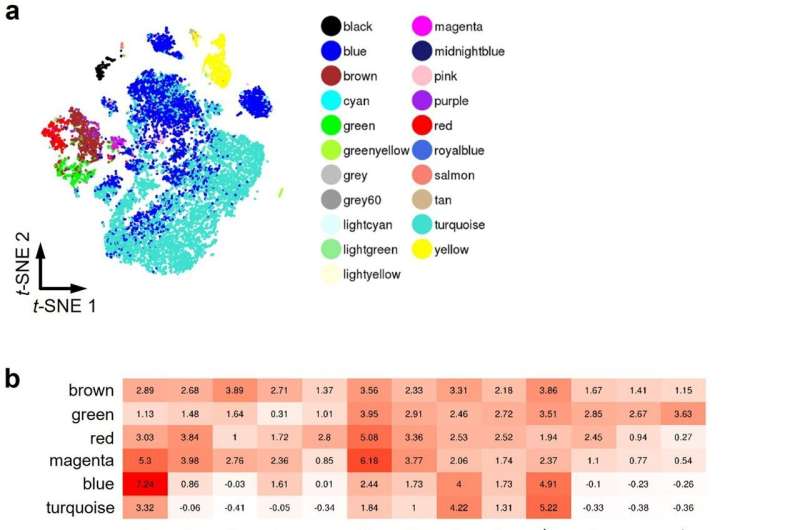Detailed analysis focusing on non-endocrine cells and validation of identified markers for detecting non-endocrine subpopulations. (a) Newly classified cell populations by reference component analysis (RCA) on the t-SNE projection. (b) A heatmap of tissues and cell lines with high similarity (reference component score > 2.5) to non-endocrine cells (brown, green, red and magenta). See Supplementary Fig. 6b for the full RCA heatmap. (c) The proportion of putative non-endocrine cells (CHGA-) for differentiated s6-iPIC-B, s6-iPIC-A and iPIC by flow cytometry analysis. Data are shown as the mean ± SD (n = 4, technical replicates). Reproducibility confirmed by 3 independent experiments. **P < 0.01 versus s6-iPIC-B, Dunnett's test. n.s.; not significant, Aspin-Welch t-test. (d) Validation of the identified novel non-endocrine markers in quantitative real-time PCR experiments. Expression levels were normalized to RPLP0 and are shown as the mean ± SD (n = 4, technical replicates). Credit: Scientific Reports (2022). DOI: 10.1038/s41598-022-08753-5
The transplantation of islet-like endocrine cells derived from human pluripotent stem cells, such as ES cells and iPS cells, is expected to be a curative treatment for diabetes. Producing the islet-like endocrine cells artificially causes contamination of non-endocrine cells, and keeping the contamination minimal is inevitable when a large amount of cells are produced for cell transplantation. However, because the non-endocrine cells are very rare and form small populations, it has been difficult to characterize them.
An academic-industry collaboration led by CiRA Junior Associate Professor Taro Toyoda has identified the non-endocrine cells that may be contaminated in the manufacturing process and detect them with high sensitivity, by analyzing gene expression of human iPS cell-derived pancreatic islet-like cells at the single-cell level.
In addition, as novel methods for removing non-target cells, the researchers showed that inhibition of PLK molecules, which are involved in cell proliferation, and inhibition of the glycolytic system are effective. These findings are expected to be useful in the safer mass production of human iPS cell-derived islet-like cells for cell therapy in combination with existing methods to remove non-target cells.
The findings were published online in the British scientific journal Scientific Reports on 18 March 2022.
More information: Hideyuki Hiyoshi et al, Characterization and reduction of non-endocrine cells accompanying islet-like endocrine cells differentiated from human iPSC, Scientific Reports (2022). DOI: 10.1038/s41598-022-08753-5
Journal information: Scientific Reports
Provided by Kyoto University
























